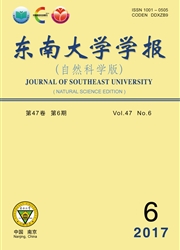

 中文摘要:
中文摘要:
搭建测量微米级管道内溶液电阻的实验平台,研究了直径在50~300μm玻璃管道内溶液的等效电阻,建立了在直流小电压作用下,微管内溶液的等效电阻与外加电压的相互关系,并对实验中的误差因素进行了分析.结果表明:在一定的电压范围内,微管内溶液的等效电阻与施加在两端的电压成非线性关系.在电压比较小的初始阶段,随着电压值的增大,微管的等效电阻值迅速减少;当电压增大到临界值(4~6V)时,等效电阻的变化量减小,最后趋于一定的阻值,该阻值近似为对应本体溶液的电阻值.研究结果表明在电压较小的初始阶段,电解及电极极化作用主导微管等效电阻,随着电压的增大,由于离子电流的增加,这种影响会迅速减少.
 英文摘要:
英文摘要:
A test rig was set up to measure the equivalent resistance of the solution in microtubes with diameters ranging from 50 to 300 μm. The relationship between the equivalent resistance and the direct voltage applied on the two ends of the microtube was built up, and the error was analyzed. The experimental results show that the relationship between the value of the equivalent resistance and the voltage is nonlinear. The equivalent resistance decreases rapidly as the applied voltage increases in a relatively small range. When the voltage exceeds a critical value (4 to 6 V), the decrease of resistance is reduced and finally the equivalent resistance approximately equals the resistance of the corresponding bulk solution. It is believed that the electrolysis and the electric polarization have important influences on the equivalent resistance of the solution in microtubes when voltage is small. At high voltages, the influences decrease quickly because of the relatively large ionic current.
 同期刊论文项目
同期刊论文项目
 同项目期刊论文
同项目期刊论文
 期刊信息
期刊信息
